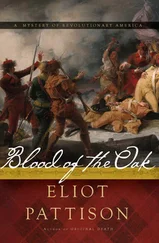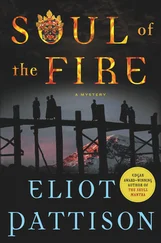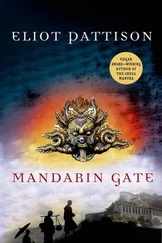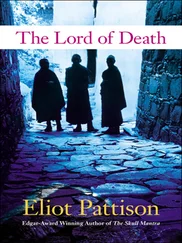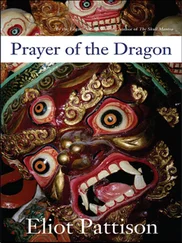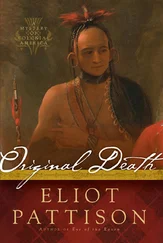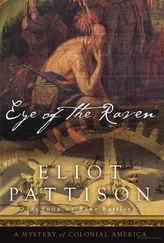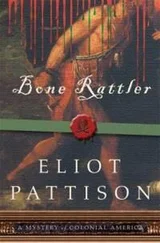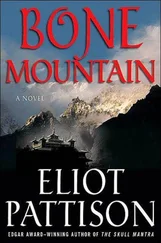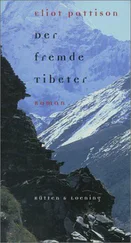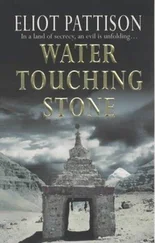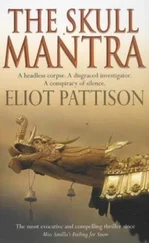Eliot Pattison - Beautiful Ghosts
Здесь есть возможность читать онлайн «Eliot Pattison - Beautiful Ghosts» весь текст электронной книги совершенно бесплатно (целиком полную версию без сокращений). В некоторых случаях можно слушать аудио, скачать через торрент в формате fb2 и присутствует краткое содержание. Жанр: Полицейский детектив, на английском языке. Описание произведения, (предисловие) а так же отзывы посетителей доступны на портале библиотеки ЛибКат.
- Название:Beautiful Ghosts
- Автор:
- Жанр:
- Год:неизвестен
- ISBN:нет данных
- Рейтинг книги:5 / 5. Голосов: 1
-
Избранное:Добавить в избранное
- Отзывы:
-
Ваша оценка:
- 100
- 1
- 2
- 3
- 4
- 5
Beautiful Ghosts: краткое содержание, описание и аннотация
Предлагаем к чтению аннотацию, описание, краткое содержание или предисловие (зависит от того, что написал сам автор книги «Beautiful Ghosts»). Если вы не нашли необходимую информацию о книге — напишите в комментариях, мы постараемся отыскать её.
Beautiful Ghosts — читать онлайн бесплатно полную книгу (весь текст) целиком
Ниже представлен текст книги, разбитый по страницам. Система сохранения места последней прочитанной страницы, позволяет с удобством читать онлайн бесплатно книгу «Beautiful Ghosts», без необходимости каждый раз заново искать на чём Вы остановились. Поставьте закладку, и сможете в любой момент перейти на страницу, на которой закончили чтение.
Интервал:
Закладка:
“I’m the heaviest,” Corbett declared. “Which of you two wants to climb?”
A moment later the American bent, and Shan climbed onto his back. Then, with Yao supporting him, he put his feet on Corbett’s shoulders. The American slowly straightened, Shan leaning on the wall for support. As the American reached his full height Shan’s head was less than an arm’s length away from the top corner.
“What is it?” Corbett asked with a groan.
“Someone is looking,” Shan said slowly. An eye was painted on a fragment of plaster, partially obscured behind the broken wall. He recognized the eye. It was one of the symbols used in murals and thangkas, and probably had been part of a larger mural that covered most of the side wall. The back wall wasn’t meant to be a wall. It was a slab that had collapsed from the ceiling, probably during the bombing of the gompa, but someone had carefully removed the remains of the painting, leaving only the eye hidden in the shadows. He put a hand on the rocks at the corner of the walls, aiming his light downward, quickly discovering that the rocks had not fallen randomly but had been carefully mortared in place. Someone had deliberately hidden part of the old ruins.
As Shan hopped off the American’s back he realized the American had noticed. Corbett shone a light along the sides to examine the cleverly concealed mortar.
“What’s back there?” Yao demanded.
Shan studied the two men uncertainly, then felt his hand close around the registration number Yao had given him. He asked Yao for a sheet of paper and sketched two maps. First, on the left side, he drew the gorge and the surface ruins as he recalled them, marking the point where the water poured out of the cliff face. Then he turned the paper over and drew on the left side the broad stairway corridor, the fresco chamber and the tunnel leading to the waterfall inside the mountain. He turned back to the top side and folded the paper in half so that the surface drawing covered the sketch of the underground complex.
“Very pretty,” Corbett said. “What are you trying to prove?”
Shan pointed on the diagram to the pattern of buildings surrounding the stairs, flanked at the entrance by pedestals for prayer wheels, then to the lines he had drawn on the opposite side of the surface compound. “It was constructed to be symmetrical. The surface was almost obliterated. But if you climb the slopes above I think you could see an identical pattern of rock walls and prayer wheel pedestals on the other side. They line up, two hundred yards apart.”
“Symmetrical,” Yao repeated, uncertainly.
Shan nodded. “The entire compound was carefully laid out by artists and lamas.” He lined up the sketches again. “The walls on the other side line up with the stairway here.”
“Another stairway,” Corbett said.
“Two stairs, at each end of a broad subterranean corridor. Which means,” Shan said, “we haven’t seen the main underground complex.”
They climbed to the surface, Shan leading them slowly, watching for signs of Gendun. Five minutes later they stood on the opposite side of the gompa, gazing at the ruins of two rock walls, in a perfect line with those flanking the stairs to the west. At the end of each wall was a pedestal for statuary. Large statues, particularly those carved of stone, were not common in Tibetan monasteries, but in this, like so many other points, Zhoka seemed an exception. On the right another pedestal held a life-sized foot in a sandal, the only remains of its statue. On the left was a figure in a monk’s robe sitting in the lotus position. It had been decapitated. Between the walls was a tangle of loose rock, shards and slabs that completely filled the stairway, overgrown with lichen and a few small struggling shrubs. A building above the stairs had collapsed into them.
Corbett wandered along the north wall, then stopped fifty feet away and called for them. He pointed downward as Shan reached his side, toward a shadow in the rubble, a shallow hole five feet across and seemingly five feet deep. But Corbett picked up a pebble and dropped it into the hole. It bounced upward. It wasn’t a shallow hole. It was a shaft covered by a canvas expertly painted in browns and greys to blend with the rocks. Corbett leaned over and pulled away a corner of the cover. The shaft continued downward for another twenty feet, a makeshift ladder leaning on one side. Someone had been excavating a small passage through the rock debris.
“So someone else knows about your underground complex,” Corbett muttered and turned to survey the grounds again.
“Why now?” Yao asked. “All these years, and suddenly someone starts digging.”
Why now indeed, Shan thought. Could it have been the monks? Could it somehow be part of Gendun’s plan to secretly revive the gompa?
Corbett bent and picked up a cigarette butt, extended it for them to see. It was recent, like the ones he had collected earlier. Someone other than monks had been here.
“Lodi,” the American suggested. He pointed to the words on the filter. “He smokes American cigarettes. Same as I found near the pool of blood.” He smelled the tobacco. “Still fresh. A few days old at most.” Suddenly the American stiffened and leaned his head toward the south. “Do you hear that? Someone’s crying.”
Shan and Yao exchanged a glance. Shan heard nothing.
Corbett studied the harsh landscape in the south, then took several small hesitant steps in that direction. Shan and Yao began searching the ground for other evidence. They found several large squares of barren soil among the rocks, which probably had once been gardens. There were long shallow imprints in several, which could have been caused by the same boots that had marked the floor below, but the wind had eroded them, making it impossible to be certain. When Shan looked up, Corbett was gone. Yao was staring at the decapitated statue, wearing an oddly worried expression.
A sudden moan broke the silence. Shan darted to where he had last seen Corbett. The American was sitting on a rock, his face drained of color. He held up a warning hand as Shan approached.
“This isn’t what I do,” Corbett said in a small, tight voice. “What is this place?” he asked for the second time that day, toward the soil beneath his feet.
Yao darted past Corbett, around the ruins of a high stone wall beyond the American. Shan found him a moment later, staring at a macabre display in the center of what appeared to once have been a small courtyard. On a makeshift plank table were bones. Nearly twenty skulls, yellow with age, were carefully lined up in the center of the table, seeming to return their stares from eyeless sockets. Arrayed before the skulls were smaller bones. A fully articulated hand. Half a dozen femurs. At either end of the table was a small brazier, for burning the fragrant smoke that attracted deities.
Yao stared, transfixed, as Shan circled the display.
“Like a massacre,” a deep voice said. Shan looked up to see Corbett standing beside Yao, his hand on his belly. “It must have been a massacre,” the American said in a tight voice. “We’ll need a forensics team.”
Yao’s eyes began to turn toward Shan, then his gaze dropped and he pulled out his pad of paper. “No one else is needed,” he said in a voice that was nearly a whisper. “This is not our concern.”
But Shan did not believe it. Someone had been excavating through the debris that had filled the deep stairwell. Above the stairs may have been a chapel, collapsed into the stairs that horrible day nearly fifty years before, a place where monks might have gathered as the end drew near. Perhaps it had not been looters but Tibetans, finally paying homage to the dead.
As Shan leaned over the rock table, Corbett took a step forward.
Читать дальшеИнтервал:
Закладка:
Похожие книги на «Beautiful Ghosts»
Представляем Вашему вниманию похожие книги на «Beautiful Ghosts» списком для выбора. Мы отобрали схожую по названию и смыслу литературу в надежде предоставить читателям больше вариантов отыскать новые, интересные, ещё непрочитанные произведения.
Обсуждение, отзывы о книге «Beautiful Ghosts» и просто собственные мнения читателей. Оставьте ваши комментарии, напишите, что Вы думаете о произведении, его смысле или главных героях. Укажите что конкретно понравилось, а что нет, и почему Вы так считаете.

